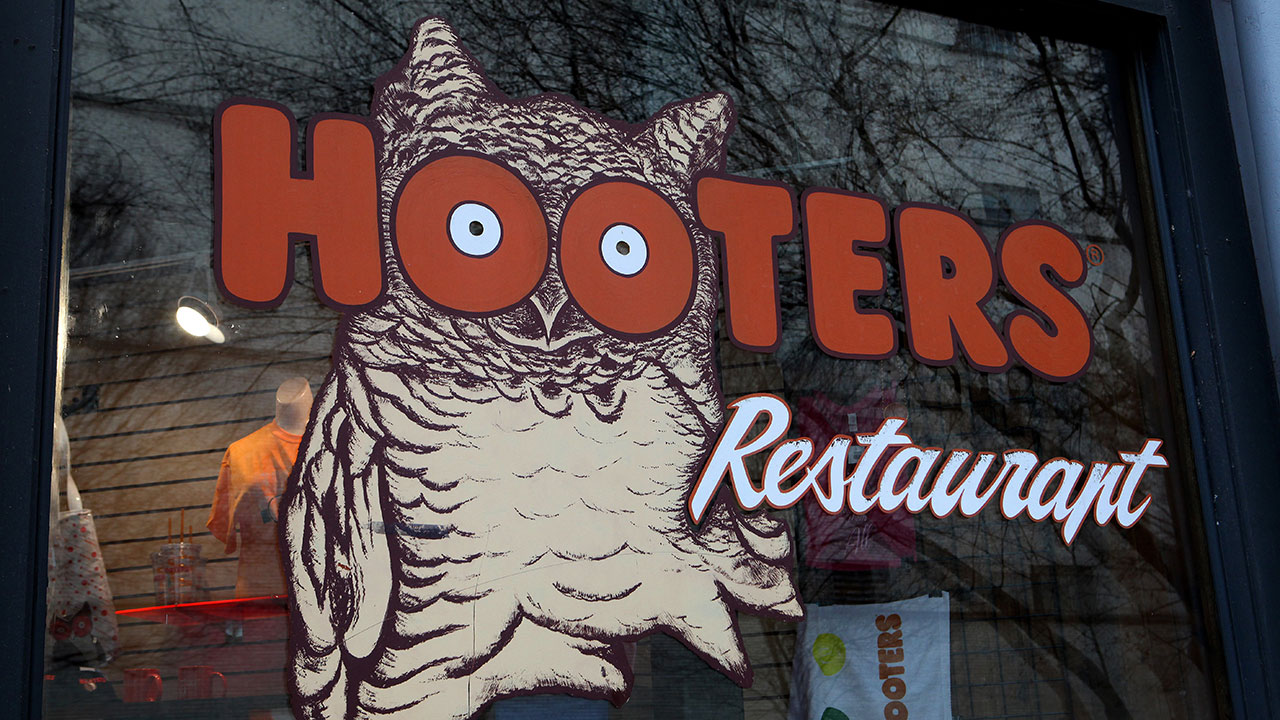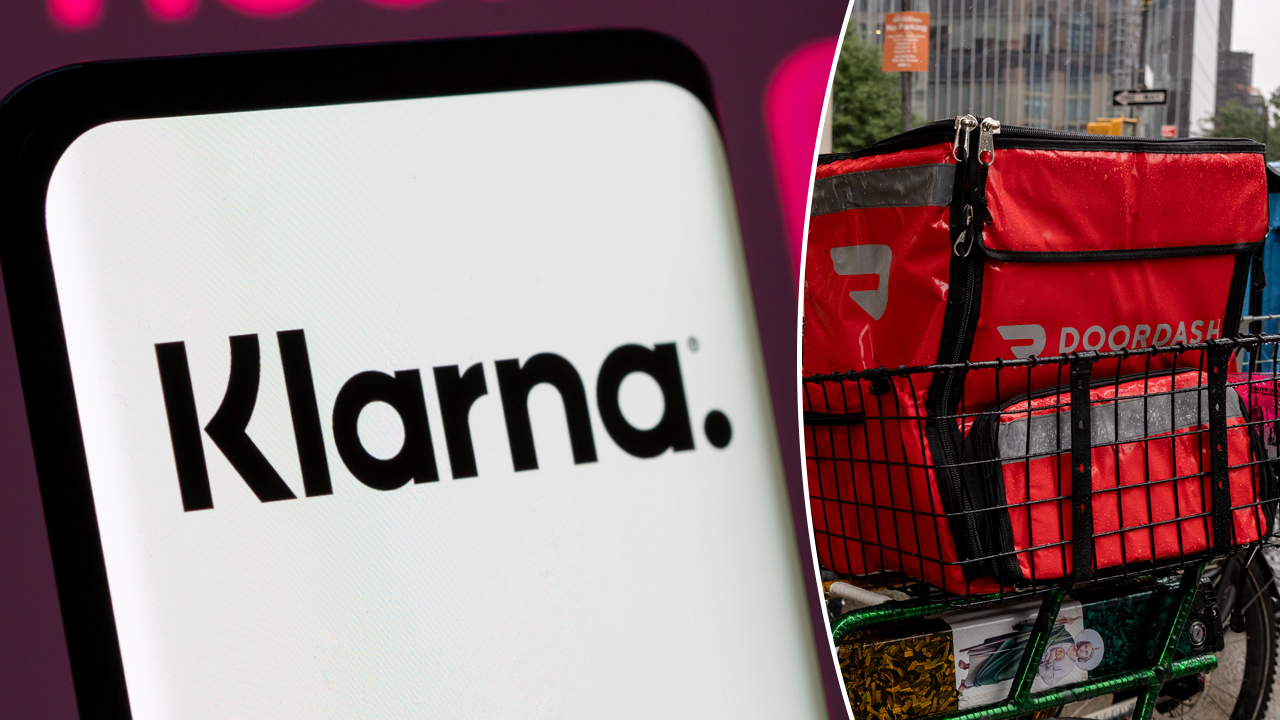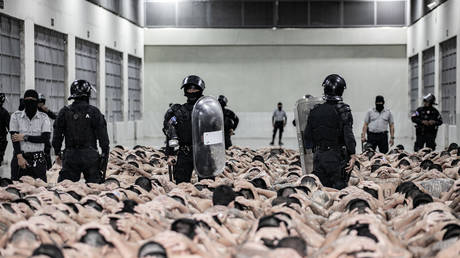Cantonese Delights, Soy Sauce Western, and Desserts Galore: How to Eat Like a Local in Hong Kong
Our in-the-know culinary travel guide to the best things to eat in Hong Kong—plus recipes for making many of the city's most iconic dishes at home.


In Hong Kong, every twist and turn presents an opportunity for food. The city is packed with cha chaan tengs (Hong Kong–style cafés), dai pai dongs (outdoor hawker stalls), street carts, and eateries dishing out local specialties, such as congee and clay-pot rice. 
The city, a shimmering metropolis often referred to as “Asia’s World City” and the “Gateway to China,” is where East meets West. Towering skyscrapers stand proudly next to regal Victorian buildings, temples, and compact tenement apartments. Neon signs hang off the buildings, and below, double decker buses and trams from the 1900s rumble past, a reminder of the city’s British colonial past. Hong Kong, a special administrative region of China, is home to about 7.5 million people, which consist of Cantonese locals, Mandarin-speaking Chinese nationals, expats from the West, and immigrants from other parts of Asia.
The food, like its population, is diverse. Cantonese food and Soy Sauce Western, a genre of Western-inspired Chinese food, reign supreme. But you’ll also find an abundance of regional Chinese cuisines and South Asian, Southeast Asian, Japanese, and Korean food. At swanky hotels, the British tradition of afternoon tea—complete with scones, clotted cream, and jam—continues. Traditional Cantonese joints dish out clay-pot rice, congee, and noodles, while cha chaan tengs serve rich milk tea alongside spam and egg sandwiches.
The city’s cuisine, for the most part, is a little British, a little Chinese, and distinctly Hong Kong. Chef Tony Tan writes in his book Hong Kong Food City, “While it’s undeniable that Hong Kong is a quintessentially Chinese city with temples and noodle shops, it is also tempered by its British legacy and sensibilities."
I grew up in Hong Kong in the 1990s, a transformational time for the city. After 156 years of colonial rule, Britain returned Hong Kong to China in July 1997. China was just beginning to open up to the world, and businesses and investors flocked to Hong Kong, eager for a share of the Chinese market. Hong Kong—and Asia, in general—experienced rapid economic growth, and with it came great wealth and drastic income inequality, something that has continued to shape the landscape and social fabric of the city. Many of the beloved restaurants and shops my family frequented when I was a child are long gone, replaced by newer, shinier, international chains.
Though much has changed about Hong Kong, one thing has not: The food remains excellent and plentiful. Local markets sell fresh sugarcane juice and fruit from all over Asia—ripe Carabao mangoes from the Philippines, pungent durian from Malaysia, and sweet, tangy Kyoho grapes from Japan. Wet markets stock locally caught fish for pan-frying and steaming, including grouper, threadfin, and big-eye fish. Food, for the most part, remains affordable. A bowl of tender brisket, tendon, and tripe with rice noodles will run you about $12 USD, and a plate of roast goose and white rice costs just about $8 USD.
For our second round of Global Eats—a food lover's guide to the culinary capitals of the world—I'll be your guide, sharing some of my favorite restaurants and meals around the city. (You'll find the first Global Eats series here.) A bad meal in Hong Kong is possible, but you’d have to try really hard—and if you eat like a local, you can’t go wrong.
Cantonese Delights
Duen Kee
57-58 Chuen Long Estate
Route Twisk
Tsuen Wan, Hong Kong
+852 2490 5246
No website
This dim sum restaurant is located at the base of Tai Mo Shan, Hong Kong’s highest mountain. Tucked away in the tiny village of Chuen Long, the restaurant is surrounded by mountains and is a hidden gem frequented by hikers and locals. The restaurant is self-serve: An assortment of tea leaves are available for you to brew your own tea. Stacks of steamer baskets, filled with Cantonese delicacies such as pork and shrimp siu mai, beancurd skin rolls, and fluffy barbecued pork buns, are lined up against pink- and white-tiled walls. Sit outside on the terrace, and you’ll be able to enjoy the scenery of Hong Kong’s lush mountains.
“You just feel so far from the chaos of the city,” Charmaine Mok, the deputy culture editor of the South China Morning Post, says. “They still do a lot of the traditional dim sum dishes, like preserved sausage buns. They have their own watercress farm in the back. It’s a wholesome experience and shows a different side of Hong Kong, like the nature surrounding it.”
Hop Yik Tai
121 Kweilin Street
Sham Shui Po, Kowloon
Hong Kong
+852 2720 0239
No website
Cheung fun (rice noodle rolls) are typically made with rice flour and water, with a small quantity of tapioca starch, glutinous rice flour, or mung bean starch for a slight chew. The batter is poured in a thin layer onto a steamer tray or piece of cloth, steamed until translucent, then rolled into noodles. They vary in shape and size: At dim sum restaurants, the noodles come filled and rolled with shrimp, beef, barbecued pork, or youtiao (Chinese fried dough sticks). Another popular method is to stir-fry noodle rolls—trimmed into two-inch lengths—with XO sauce and bean sprouts. Eaten as a street food, the rice noodle rolls are usually left unfilled and garnished with an assortment of sauces.
Locals and tourists alike flock to Hop Yik Tai for the cheung fun, which are silky smooth—a texture locals refer to as “wat loot loot”—with just enough spring. A little cart filled with fresh rice noodle rolls stands at the front of the shop; it’s manned by a gruff employee with a pair of scissors, ready to trim rice noodle rolls to-order. Each portion comes drizzled with sesame sauce, sweet sauce, and soy sauce, with a generous sprinkling of sesame seeds. Word on the street is that Hop Yik Tai seasons their soy sauce with lard, which gives the rice rolls an additional richness and savory flavor. At Hop Yik Tai, you’ll find other local street food favorites, including fish balls and siu mai (pork and shrimp dumplings).
Kwan Kee Claypot Rice
Shop 1, G/F
263 Queen’s Road West
Sai Ying Pun, Hong Kong
+852 2803 7209
No website
Hong Kong’s subtropical climate means the city’s temperatures rarely dip below 59°F (15°C). When it does, however, crowds flock to eat clay-pot rice, a dish of rice steamed and crisped over charcoal stoves. The dish is Hong Kong’s version of a one-pot meal: Assorted toppings like funky preserved pork sausage, spare ribs marinated with black bean sauce, and velveted chicken are nestled onto the raw grains. The toppings gently steam as the rice cooks, and the grains at the bottom char, forming a beautifully crisp crust.
At Kwan Kee, the demand for clay-pot rice is year-round: The queue for dinner begins long before the doors open at 5:30 p.m. each day, and some wait as long as two hours for a bite of the restaurant’s famous clay-pot rice. The restaurant is particularly well known for its white eel clay-pot rice: Plump morsels of white eel are drizzled in fermented black bean sauce and garnished with fresh scallions and chiles. The soy sauce, subtly sweet and fragrant, has a savory depth that brings the entire dish together. Kwan Kee may be known for its clay-pot rice, but I also recommend ordering several of their excellent side dishes, such as the eggplant braised with salted fish or steamed minced pork patty with salted duck egg, to go with your rice.
Sang Kee Congee Shop
7 Burd Street
Sheung Wan, Hong Kong
+852 2542 1099
No website
Sang Kee has been around since the 1960s; the congee shop operated as an outdoor food stall before moving into its current location in the 1980s. Over the decades, Sang Kee has amassed a loyal following. The no-frills shop is known for its congee with tender fish belly, though its congees with beef meatballs and fish balls are also popular. “Pure, thick, and snowy white with fully bloomed grains of rice, Sang Kee’s congee has an elegance that far exceeds the term ‘savory rice porridge,’” writer Betty Richardson raved in the South China Morning Post earlier this year. The congee comes with small bowls of soy sauce with julienned ginger and delicate ribbons of spring onions, but the porridge is so delicious you likely won’t need it. Do, however, order a side of Chinese fried dough—zha leung in Cantonese, youtiao in Mandarin—for dipping.
Shui Kee
2 Gutzlaff Street
Central, Hong Kong
+852 2541 9769
No website
This tiny, crowded noodle stall has been a mainstay of the city’s Central district since the 1940s. In 2014, Lam Kin Wing, the third-generation owner of Shui Kee, told the South China Morning Post that his grandfather opened up the shop in the 1940s, just after the Japanese occupation of Hong Kong. Located in an alleyway amidst the hustle and bustle of Hong Kong, Shui Kee specializes in beef offal, which supposedly comes from freshly slaughtered cows and is never frozen. Diners vie for bowls of soup noodles with beef lungs, spleen, or intestines, though cuts like skirt steak and brisket are available, too.
Prepare to go early: Shui Kee often sells out before 2:00 p.m., and hungry diners begin lining up around 11:00 a.m. Like Sister Wah below, Shui Kee’s broth has layers of savory depth, and each sip is infused with the rich flavor of beef. Also worth ordering with your offal soup: A side of crispy fried fish skin and a glass of housemade chrysanthemum tea.
Sister Wah Beef Brisket
13 Electric Road
Tin Hau, Hong Kong
+852 2807 0181
Sister Wah is known for its broth, which simmers all day long. When I asked an employee how much broth they make each day, they responded: “We never stop making broth. We make it all day long, until we close.” Clean and clear as the broth is, it is also deeply flavored—there is a touch of sweetness, a hint of star anise that gives it a very subtle warmth, and rich, savory depth from beef. 
The shop is small and cramped, and in true Hong Kong style, I shared a table with three other solo diners: two locals and a tourist, all silently slurping their noodles. The beef brisket, tendon, and tripe noodles here may very well be the best bowl of noodles I’ve ever eaten in Hong Kong. The tangle of wide rice noodles was topped with tender brisket, soft, chewy tendon, and tripe with just enough bounce. The other dishes on the menu, such as the wontons, are worth ordering, too, but the beef brisket noodles are an absolute must.
Sun Hing Restaurant
Shop C, 8 Smithfield Road
Sai Wan, Hong Kong
+852 2816 0616
No website
Sun Hing is an old-school Hong Kong dim sum spot that’s open from 3:00 a.m. to 4:00 p.m. each day. It’s loud, chaotic, and very Hong Kong: Diners, perched on shabby plastic stools, crowd around small tables as servers shuffle stacks of steamer baskets back and forth. Order the fried milk—a milk custard that’s coated in batter and fried until crisp—a retro dim sum dish that’s rarely found on menus nowadays. The tripe, cooked in a mild Hong Kong–style yellow curry, is tender and springy. Don’t leave without ordering one of the light, fluffy custard buns that Sun Hing is well known for: Filled with a salted egg custard that oozes out, it’s a salty-sweet treat that people trek here for.
Wing Restaurant
29/F, The Wellington
198 Wellington Street
Central, Hong Kong
+852 2711 0063
When I asked Mok how she thought Hong Kong’s dining scene was changing, she mentioned that many chefs and restaurants in the city—long enamored with European cuisines such as French and Italian—have been returning to Chinese culinary traditions. One of those chefs is Vicky Cheng, a Canadian-born cook who is an alumnus of Daniel Boulud’s legendary French restaurant Daniel in Manhattan. Cheng moved to Hong Kong in 2015 and dove straight into learning everything he could about Chinese cuisine. “He started experimenting and really began to try to understand what defines Chinese cookery,” Mok says. “What are the ingredients? What are the techniques? That’s when he came up with Wing, which is a love letter to Hong Kong cuisine.”
At Wing, Cheng offers a contemporary take on traditional Cantonese dishes. Ingredients local to Hong Kong and southern China star in his cooking: Braised pomelo pith, a local delicacy that’s difficult to come by nowadays, is seasoned with savory shrimp roe and served in a sumptuous abalone sauce. Threadfin, a local variety of fish popular in Hong Kong, is steamed and topped with umami-rich salted pork and preserved vegetables. His signature dish is a “golden crystal egg,” a housemade century egg with amber whites and a jammy yolk, served with slippery Japanese oysters in a housemade chili sauce. It is, Mok says, a meal to remember—and one to make time for when visiting Hong Kong.
Yan Wo Dou Bun Chong
55 Jardine’s Bazaar
Causeway Bay, Hong Kong
+852 2808 4738
No website
Every time I visit Hong Kong, I visit Yan Wo Dou Bun Chong, an eatery that specializes in freshly made soy products. Their soy bean dessert—a silken tofu pudding—is tender and quivers on the spoon. It’s excellent plain with a sprinkling of rock sugar, but is especially delicious when topped with fresh ginger juice for a subtle kick. The savory smell of pan-fried tofu stuffed with fish sausage fills the air, and diners gulp down glasses of fresh, nutty soy milk before heading on their way.
Soy Sauce Western
Cheung Hing Coffee Shop
9 Yik Yam Street
Happy Valley, Hong Kong
+2572 5097
No website
Walking into Cheung Hing Coffee Shop feels like stepping into the 1950s. The tiled floors, ceiling fans, and mid-century wooden dining chairs give the cha chaan teng a nostalgic feel. Opened in 1951, the coffee shop is popular among locals for its puff pastry egg tarts and pineapple buns. The egg tarts—crisp, flaky, and filled with a golden custard that wobbles ever so slightly—are the best I’ve had, and for me, a visit to Hong Kong would be incomplete without one. The pineapple buns are available with various fillings, including satay beef or ham and egg, or stuffed with a generous slab of butter. The scrambled eggs are velvety and delicious on their own, or sandwiched with fried spam between two slices of buttered white bread. I’ve tried to replicate the silkiness of the eggs in my own recipe for the classic Hong Kong sandwich, though in my honest opinion, nothing will compare to the real thing from Cheung Hing. Of course, everything must be washed down with a cup of strong Hong Kong milk tea. Cheung Hing’s is silky smooth, and the evaporated milk’s richness balances the pleasant bitter, tannic notes of the tea. 
Yee Shun Dairy Company
506 Lockhart Road
Causeway Bay, Hong Kong
+852 2591 1837
No website
Macaroni and ham in soup and French toast drizzled with condensed milk may not sound like food from Hong Kong, but these local interpretations of Western dishes are cha chaan teng staples. Though Yee Shun Dairy Company hails from Macau, another special administrative region located an hour away from Hong Kong, the cafe is a Hong Kong stalwart frequented by both locals and tourists. My mother often brought me here for an afterschool snack when I was a child, and we’d each demolish a bowl of the shop’s specialty: delicate “double skin” milk puddings. The first skin is the one that forms when boiled milk cools; the second is one that forms when the pudding—a mixture of milk, sugar, and egg whites—cools.
The puddings are available hot or cold, and plain, chocolate-flavored, coffee-flavored, or with ginger juice. Ginger juice is my go-to—its warm flavor complements the natural sweetness of the milk. If you’re in the mood for savory food, consider the macaroni with satay or the Macanese pork chop sandwich, which is really just an excuse to eat a crispy, well-seasoned piece of meat between a toasted bun. Like the pork chop sandwich at Yee Shun, my recipe for the Macanese dish delivers a chop that's well-seasoned and crisp.
Chinese Bakeries and Desserts
Traditional Chinese pastries and desserts aren’t particularly sweet: They’re typically made with nuts, seeds, beans, rice, and fruits. There are dessert soups called tong sui, which means “sugar water,” though most of these aren’t very sweet at all. Most of them use nuts and seeds like walnuts, sesame, almonds, or coconut milk as the base. Sago, grass jelly, taro, sweet potato, and ginger are also other commonly used ingredients in hot and cold desserts. Cakes and dumplings like sesame paste-filled tong yuen are usually made with glutinous rice flour, giving them a pleasantly chewy texture. Fruits have a starring role, too: Mango, durian, lychees, and longan are especially popular.
C Dessert
Shop 1D, G/F, Newman House
35-45 Johnston Road
Wan Chai, Hong Kong
+852 2493 3349
When the beloved Hong Kong dessert spot Cong Sao Dessert (“Auntie Cong’s Dessert”) shuttered in 2020, locals mourned. The shop offered creative and contemporary spins on Chinese dessert, including longan sorbet with jellies and nata de coco and mango milkshake–flavored steamed milk puddings. Much to everyone’s delight, Auntie Cong returned with C Dessert in 2023. And every evening, you can expect to see a queue of hungry diners—eager for something sweet—snaking around the block. 
The desserts are bold and flavorful: Creamy durian, sweet and funky with notes of gasoline, sits on top of a refreshing bed of shaved ice. Chilled mango soup with pomelo and sago, a classic Cantonese dessert, is bright and refreshing, with pops of acid from the pomelo. The warm coconut milk with black rice, taro, and taro rice balls is creamy and comforting, a cozy dessert best enjoyed on a cool evening. Eat your way through the menu, and you’ll understand why the queue persists night after night.
Fook Yuen
7 Fook Yuen St
North Point, Hong Kong
+852 3106 0129
No website
Fook Yuen is a Chinese dessert spot renowned for their tong yuen. It is tiny and cramped, with barely any room to sit; still, people queue for a taste of the legendary dumplings, with some purchasing a box or two to cook at home. Their tong yuen is pillowy soft with just the right amount of chew, and both the sesame paste and peanut paste used to fill the dumplings are richly nutty and deeply fragrant, with small bits of nuts and seeds that provide a satisfying crunch.
Kai Kai Dessert
29 Ning Po Street
Jordan, Kowloon
+852 2384 3862
No website
Kai Kai Dessert has been open since 1979, and serves up traditional Cantonese desserts like creamy walnut soup, taro soup with sago and lotus seeds, and fragrant almond soup. (Fun fact: Chinese almonds, called hung yun, are actually apricot kernels. If you ever spot “almond” on the menu of a Chinese restaurant, chances are they’re actually referring to apricot kernels.) Since 2015, Kai Kai has been on Michelin’s Bib Gourmand list, making it even more popular among locals and tourists. Over the years, I’ve eaten my way through most of their menu, and my favorite dessert from them is the black sesame soup and walnut soup combination, which allows you to enjoy the best of both worlds. Prepare yourself for brusque service, which is a norm in Hong Kong but may be considered rude by tourists.
Happy Bakery
66-68 Queen’s Road East
Wan Chai, Hong Kong
+852 9490 0156
No website
In July 2022, Happy Cake Shop, which opened in 1977, announced it was closing after their landlords decided to take the space back. Loyal customers prepared to say goodbye, and queued outside the mom-and-pop shop for the bakery’s famous horn-shaped cream puffs, egg tarts, and pineapple buns. Fortunately, Happy Cake Shop returned in 2023 as Happy Bakery just a few doors down from its original location, and today it sells many of the same baked goods it sold at its former spot. On my most recent trip to Hong Kong, I was lucky to visit when fresh egg tarts had just come out of the oven—they were warm and slightly sweet with a crumbly cookie crust. Don’t skip their cream horns and the fluffy buns covered in salty-sweet pork floss.
Hanging in Hong Kong
It’s very easy to get around Hong Kong: The city is extremely walkable, and a vast network of MTR subway stations, buses, trams, and minibuses makes it seamless to get from place to place. There’s plenty to do besides eating, too: Spend the morning hiking the Dragon’s Back, a popular trail in Shek O Country Park, go surfing in Big Wave Bay, or head up to The Peak for a glimpse of the city’s skyline. Or take a page out of my book and go on a food crawl through different neighborhoods. Wherever you end up, something delicious awaits.
What's Your Reaction?























































































